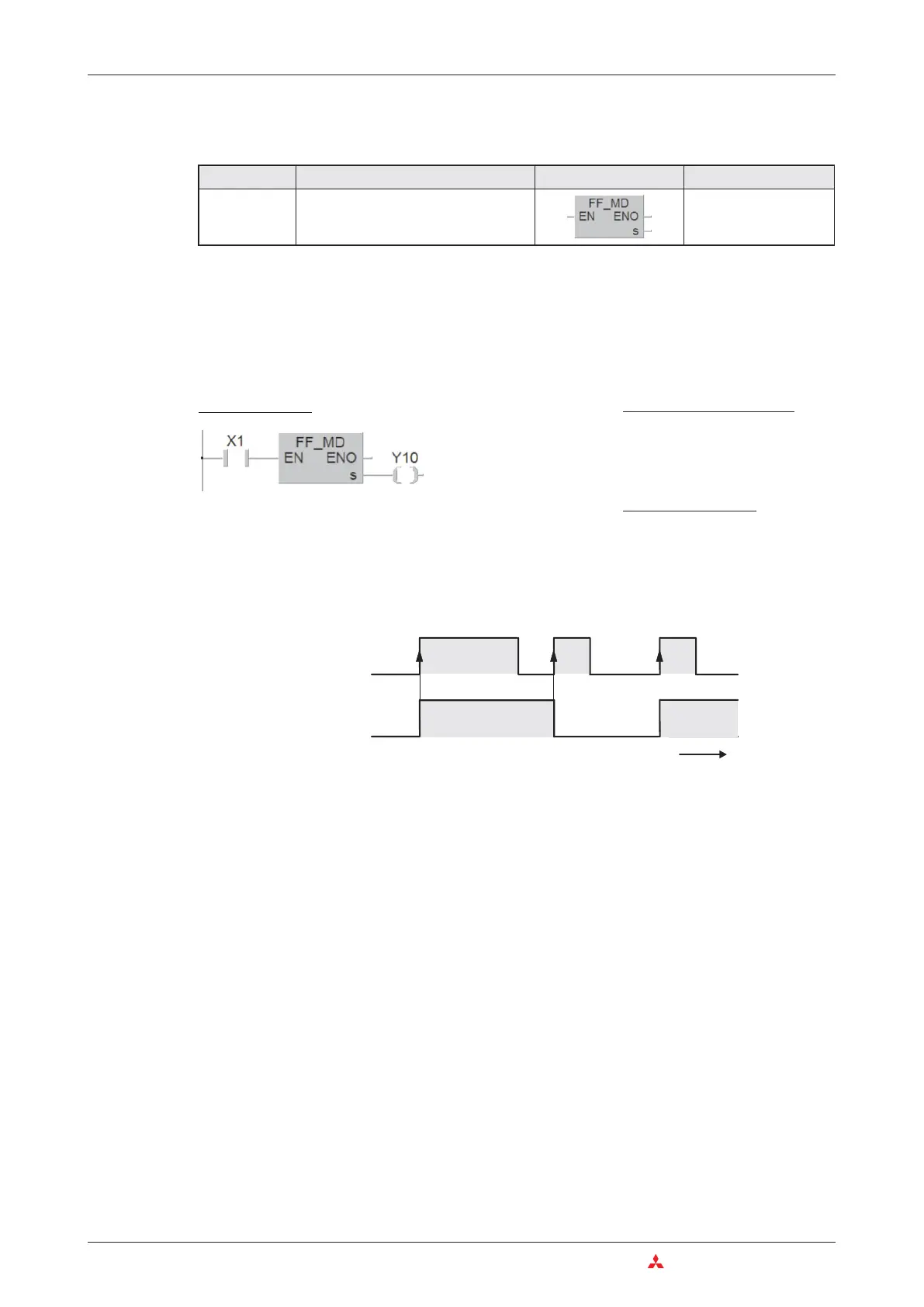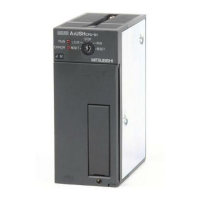4.7.11 Inversion of bit output device
*
The FF instruction can be used to set outputs (Y), relays (M) and individual bits of word devices.
The FF instruction inverts the operation condition of the device designated at the output with
the rising edge at the input of the FF instruction.
–
If the condition of the output device is set (1) it will be reset (0) after inversion.
–
If the condition of the output device is reset (0), it will be set (1) after inversion.
The above program inverts the output condition of Y10 with the rising edge from input X1:
4–30 MITSUBISHI ELECTRIC
The Basic Instruction Set An Introduction to Programming
Instruction Function Ladder Diagram IEC Instruction List
FF
Inversion of bit output device FF_MD
Ladder Diagram
MELSEC Instruction List
LD X1
FF Y10
IEC Instruction List
LD X1
FF_MD Y10
Y10
X1
OFF
ON
t
(0)
(1)
0
1

